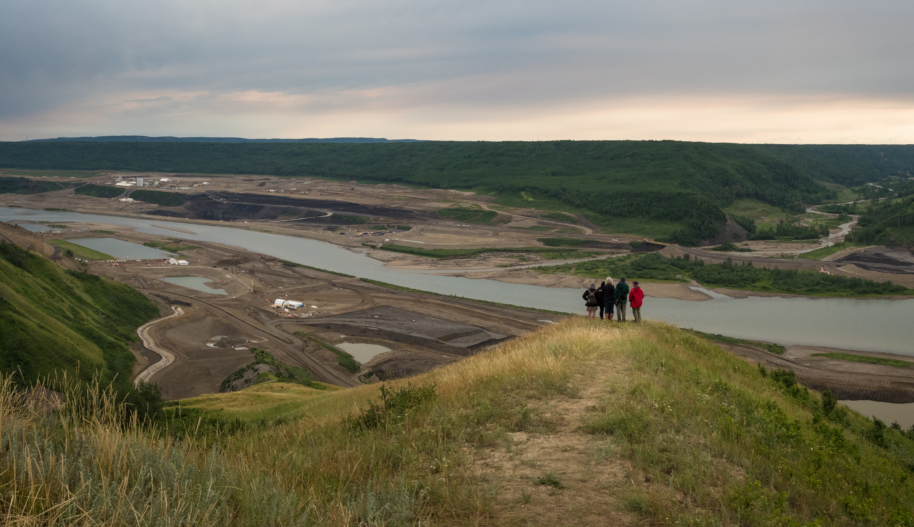AMNESTY INTERNATIONAL
NEWSFLASH
March 21, 2019
OTTAWA – Whether it’s the devastating legacy of mercury contamination at Grassy Narrows, ongoing pollution from the Mount Polley mining disaster, or the looming threat of the Site C dam construction, Amnesty International says government decisions that ignore the health and well-being of Indigenous peoples must be recognized as a form of environmental racism.
“It’s no coincidence that three of our highest priority human rights cases in Canada all revolve around contamination and threats to the rivers and lakes on which Indigenous peoples depend for their livelihoods and ways of life,” says Tara Scurr, business and human rights campaigner with Amnesty International Canada. “Far too often, governments in Canada have demonstrated that they place little value on the health and well-being of Indigenous peoples and the revitalization of their cultures and traditions. That’s why we are marking World Water Day by renewing our commitment to support the Indigenous water defenders leading these crucial and inspiring human rights struggles.”
It is the responsibility of resource development companies to respect human rights – and for our governments to swiftly act when they do not.
In B.C.’s Quesnel Lake region, the site of the Mount Polley tailing pond collapse in August 2014, people like Bev Sellars have been fighting to hold those responsible to account. Sellars, the former chief of the Xat’sull First Nation, filed private charges against the Mount Polley Mining Corporation, but in 2018, the province stayed those charges. This is in addition to a criminal investigation launched by B.C.’s Conservation Officer Service and the RCMP in 2015. However, nearly five years since the disaster, the public is still waiting to learn if any charges will be laid by the Aug. 4, 2019 deadline. Despite all this, Mount Polley is permitted to discharge mine waste water into Quesnel Lake. Residents are fighting the discharge permit before B.C.’s Environmental Appeal board.
“We have already lost access to our land, traditional foods and medicines,” said Sellars. “We can’t afford to sit back and watch more toxic waste being dumped into our sacred waterways. The province of B.C. may have stepped aside, but we will not let our livelihoods be destroyed.”
A recent health study demonstrates the depths of the health crisis experienced by the Grassy Narrows First Nation as the result of mercury poisoning, including learning disabilities and nervous system disorders among youth born long after the initial disaster. In the 1960s, a paper mill dumped mercury into the English and Wabigoon river system in Northwestern Ontario, contaminating the water and poisoning the fish. Although members of Grassy Narrows have long known that mercury poisoning has impacted the health of the community, the federal and provincial governments have done little to address their needs, or even acknowledge the crisis.
“We won’t stop demanding justice until all the members of our community have access to the supports and care that they need,” said Grassy Narrows First Nation Chief Rudy Turtle. “Despite the impacts on our community of decades of mercury poisoning, our incredible children and youth have demonstrated their resilience by drawing so much public attention to our struggle. We need Prime Minister Trudeau to do everything in his power to join us in preventing more generations from bearing the brunt of this environmental crisis.”
Meanwhile, construction of the Site C dam is underway in the Peace Valley, despite a United Nations committee’s calls to immediately halt the project. In a letter issued in December, the UN Committee on the Elimination of Racial Discrimination (CERD) gave the federal and B.C. governments until April 2019 to prove that steps are being taken to suspend construction of the multibillion-dollar public dam project. Any further construction work could permanently damage the land rights of Indigenous peoples in the Peace River area.
“Our people are living with the harm caused by previous dams on the Peace River and now the B.C. government wants to take away some of the most critical cultural and ecological areas that are left for us,” said Chief Roland Willson of the West Moberly First Nations. “There’s a good reason that this project has been condemned by the UN’s top anti-racism body. The only question now is whether the federal and provincial governments will listen and act.”
On Friday, March 22, World Water Day will serve as a reminder that the fight is far from over for those living in West Moberly First Nation, the Quesnel Lake region and Grassy Narrows. The ongoing environmental crises in these communities are the result of massive resource development projects that either have had or risk having irreversible harmful effects on the communities’ water sources, cultural practices and way of life.
These destructive environmental crises exemplify a pattern of rights violations experienced by Indigenous peoples that amounts to environmental racism. For too long, the rights of those living in these affected communities have been ignored.
On this World Water Day, let us act in solidarity with Indigenous peoples in the Peace Valley, Grassy Narrows and Quesnel Lake areas whose livelihoods and cultural identities depend on healthy rivers and lakes.
For more information, or to arrange an interview, please contact:
Lucy Scholey, Amnesty International Canada (English), 613-744-7667 ext. 236, lscholey@amnesty.ca
Learn more about ways you can celebrate World Water Day and take action for Indigenous water defenders.
 OLYMPUS DIGITAL CAMERA
OLYMPUS DIGITAL CAMERA












